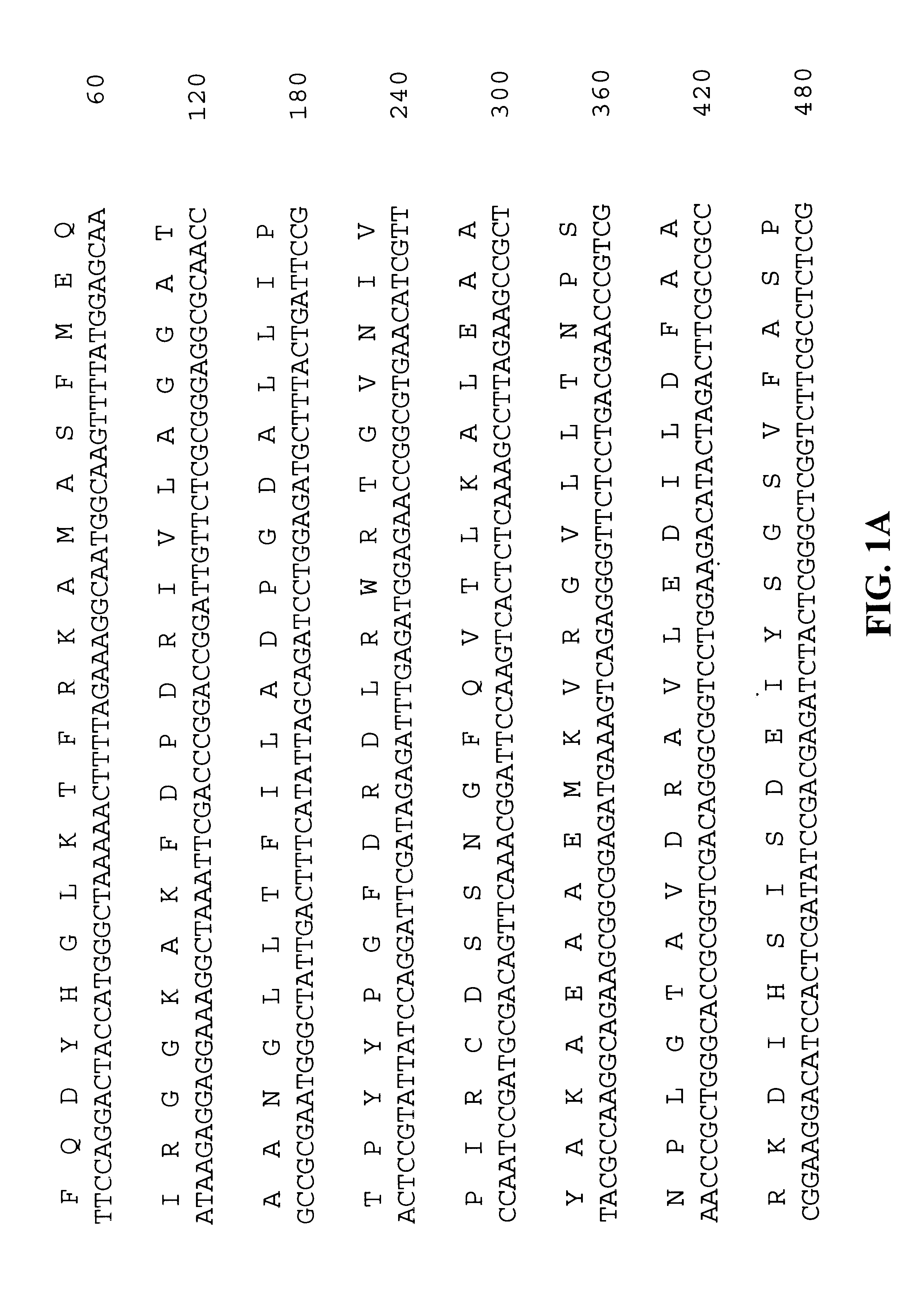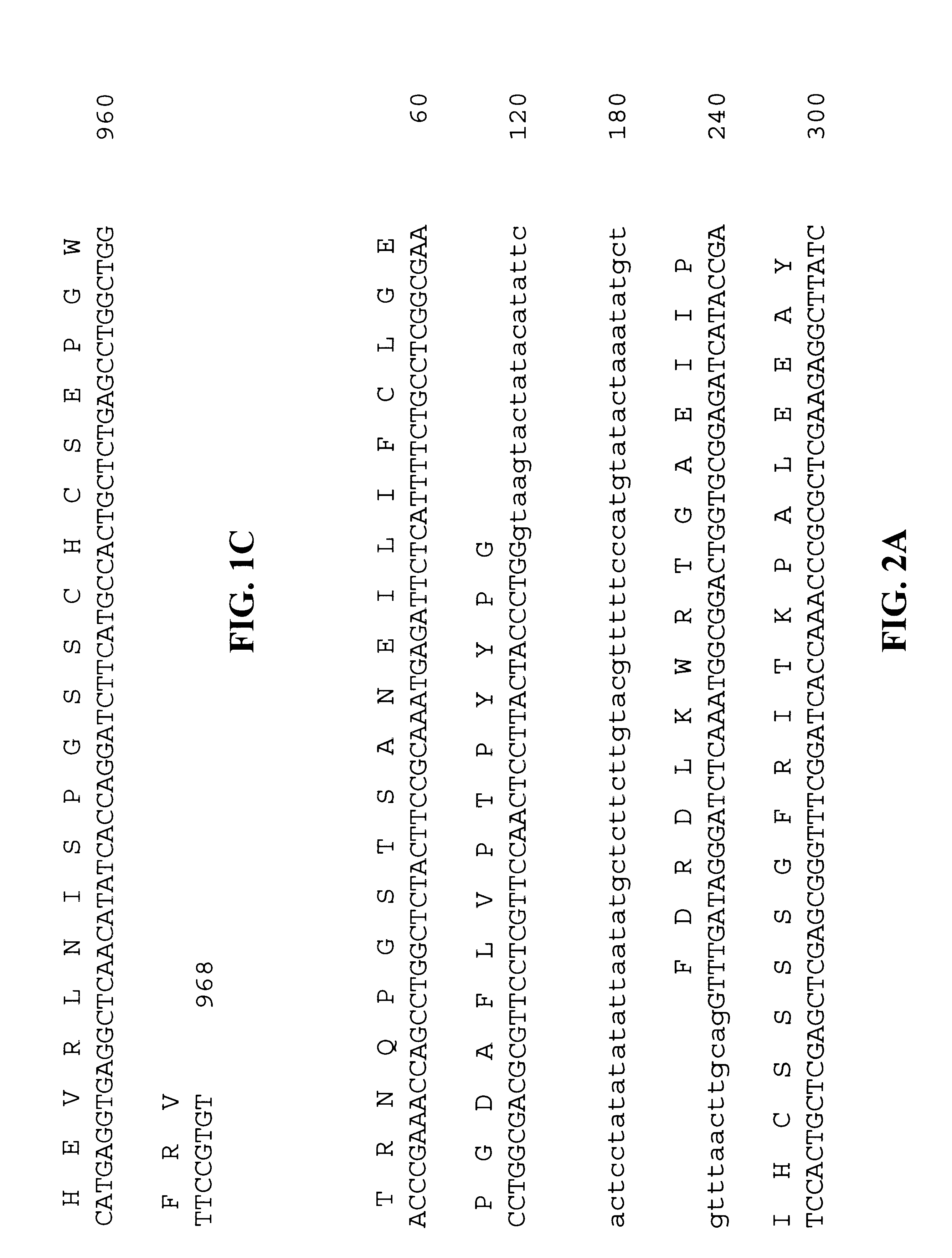ACC synthase genes from pineapple
a technology of acc synthase and pineapple, which is applied in the field of acc synthase genes derived from pineapple, can solve the problems of reducing the quality and storage life of post harvest cutting flowers, reducing the uniformity of fruit maturity within the crop, and reducing the effect of endogenous ethylene on crop health and productivity, so as to prevent synthesis, improve the uniformity of fruit maturity within the crop, and be flexible in planning
- Summary
- Abstract
- Description
- Claims
- Application Information
AI Technical Summary
Benefits of technology
Problems solved by technology
Method used
Image
Examples
example 2
Amplification of ACC Synthase Genes From Induced Tissue
Materials and Methods:
All glassware, utensils and centrifuge tubes were rinsed with water containing 0.1% diethyl pyrocarbonate (DEPC) and autoclaved in order to remove RNA degrading enzymes and protein contamination. Solutions were incubated with DEPC (0.1% final concentration) overnight and autoclaved to denature any RNases present in said solutions.
Nucleic Acid Extraction Procedure
In a liquid-nitrogen-filled mortar, tissue comprising basal white portion of the D leaf (1-4 g) was ground to a fine powder. While still frozen the powder was transferred to a 100 mL beaker containing 30 mL of lysis buffer (150 mM Tris pH 7.5 with boric acid, 2% SDS, 50 mM EDTA, 1% mercaptoethanol) and stirred for 5 min at room temperature. 0.25 volume of absolute ethanol and 0.11 volume of 5 M potassium acetate were added to the homogenate and stirred for a further 3 min. One volume of chloroform isoamyl alcohol (24:1) (SEVAG) was added subsequentl...
example 3
Stable Integration and Expression of ACC Synthase Antisense Genes in Pineapple (Ananas comosus (L.) Merrill.)
Materials and Methods
Initiation of somatic embryogenesis
Meristems are excised from the crown of a pineapple fruit and placed on MS media (Murashige and Skoog, 1962, Physiologia Plantarum, 15:473-497) containing 2.5 mg / L 6-benzylamino purine (BAP). When subcultured at a two-weekly interval, buds / shoots start to proliferate after 3 to 5 months. Leaf base tissue or stem tissue is then excised and placed on callus media (Wakasa, K., 1989, In "Biotechnology in Agriculture and Forestry 5--Trees 11", Ed Bajaj, Y. P. S. Springer-Verlag, London) containing MS, 10 mg / L BAP and 10 mg / L sodium .alpha.-naphthalene acetate (NAA). In the case of leaf base material, callus forms in 24 to 34 days on over 60% of explants. In the case of stem tissue, callus will form on over 90% of explants in 13 to 24 days. Leaf explants are preferred as they produce callus of a higher quality with a greater p...
PUM
| Property | Measurement | Unit |
|---|---|---|
| temperatures | aaaaa | aaaaa |
| Tm | aaaaa | aaaaa |
| Tm | aaaaa | aaaaa |
Abstract
Description
Claims
Application Information
 Login to View More
Login to View More - R&D
- Intellectual Property
- Life Sciences
- Materials
- Tech Scout
- Unparalleled Data Quality
- Higher Quality Content
- 60% Fewer Hallucinations
Browse by: Latest US Patents, China's latest patents, Technical Efficacy Thesaurus, Application Domain, Technology Topic, Popular Technical Reports.
© 2025 PatSnap. All rights reserved.Legal|Privacy policy|Modern Slavery Act Transparency Statement|Sitemap|About US| Contact US: help@patsnap.com



